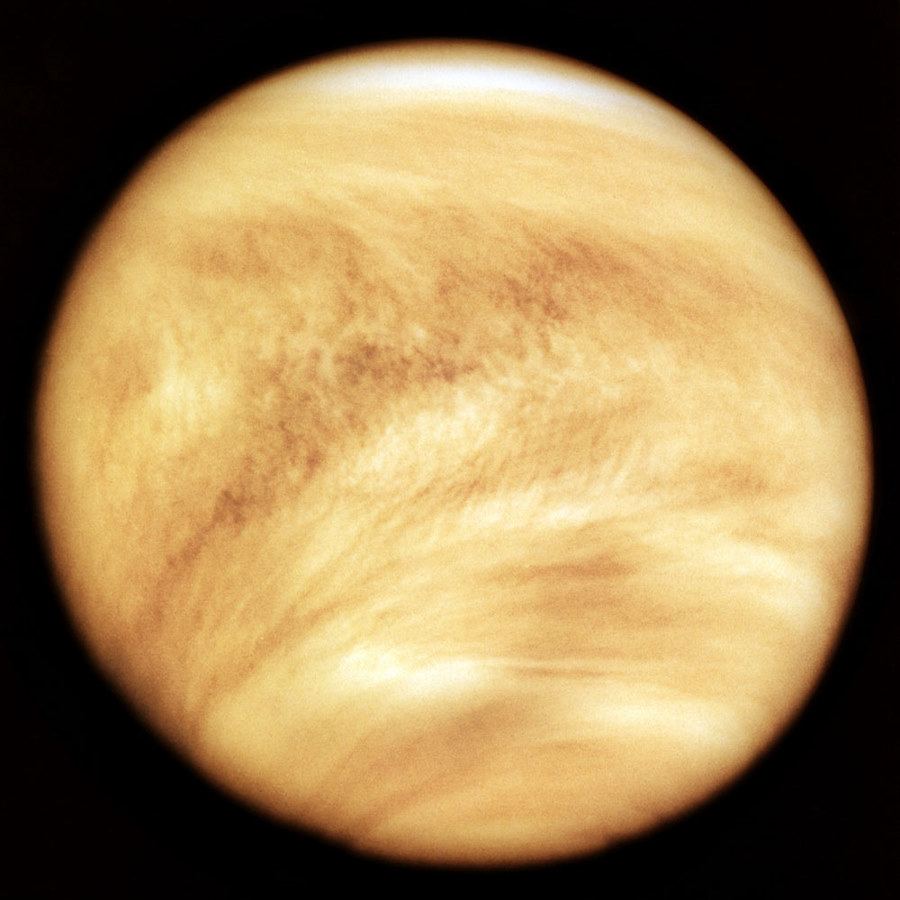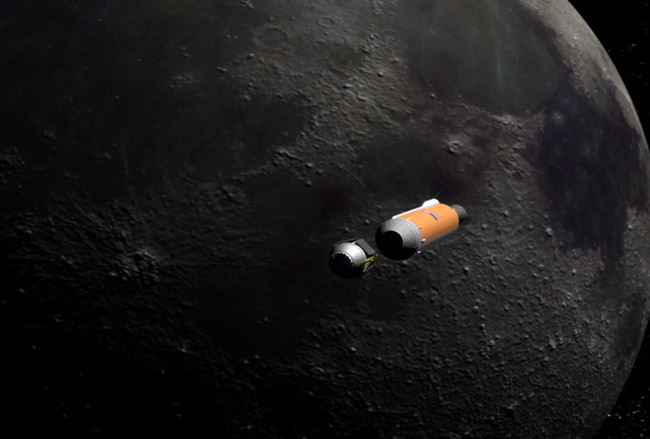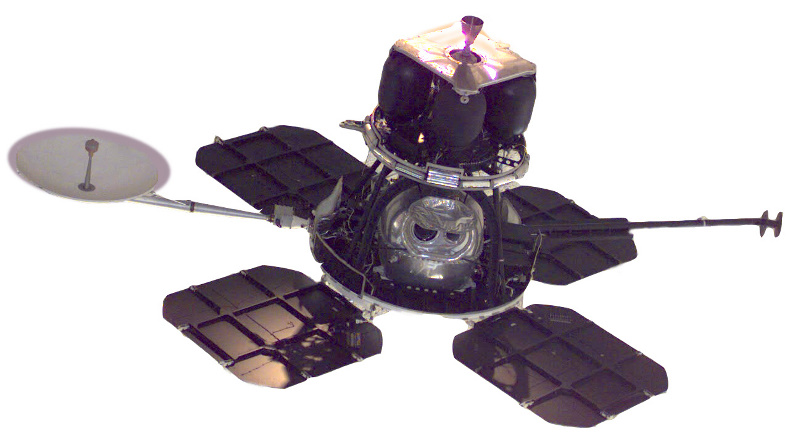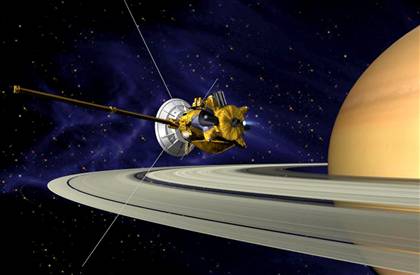| DANGERS
FROM SPACE
NASA Deliberately Crashing Satellites Part Two |
|
|
Messenger Mission .
June 5, 2007: Picture this: A spaceship swoops in from the void, plunging toward a cloudy planet about the size of Earth. A laser beam lances out from the ship; it probes the planet's clouds, striving to reach the hidden surface below. Meanwhile, back on the craft's home world, scientists perch on the edge of their seats waiting to see what happens. Sounds like science fiction? This is real, and it's happening today. The spacecraft is MESSENGER, and the planet is Venus. On June 5, 2007, MESSENGER will fly past Venus just 338 km above the planet's surface--and it will shoot a laser into the clouds. |
|
|
LRO Mission .
NASA Adds Moon Crashing Probes to LRO Mission April 10, 2006
Excerpts: NASA’s next mission to Moon will not merely orbit the gray satellite, but crash two vehicles into its South Pole to hunt for water ice, the space agency said Monday.In addition to mapping the Moon to support future astronaut missions, NASA’s Lunar Reconnaissance Orbiter (LRO) spaceflight will also aim a spent fuel stage and impactor probe at a southern crater rich in hydrogen and, possibly, ice. “I think aggressively touching the Moon is an understatement,” said Scott Horowitz, NASA’s associate administrator for the Exploration Systems Mission Directorate, in a Monday press conference. “What this mission buys is an early attempt to know what some of the resources we’re going to have…we know for sure that for human exploration to succeed we’re going to have to essentially live off the land.” Astronomers know that hydrogen exists in some form on the permanently-shadowed crater floors along the Moon’s polar regions from past lunar orbiters. The Pentagon’s Clementine spacecraft hinted at water ice in a crater called Shackleton in 1994, while NASA’s Lunar Prospector unmistakable signs of hydrogen on the Moon’s surface. NASA hopes its LRO and crash missions will provide solid answers on the presence water ice on the Moon, and whether it exists in forms that may prove useful for future astronauts. Under the space agency’s exploration vision, a four-astronaut Moon mission is slated for no later than 2020. Lunar smash-up Set to launch with LRO in October 2008, the $73 million Lunar Crater Observation and Sensing Satellite (LCROSS) is a bare-bones spacecraft designed to use cameras and spectrometers to watch its 4,409-pound (2,000-kilogram) upper stage slam into hydrogen-rich Shackleton Crater, mission managers said. But LCROSS mission managers expect their crash-destined duo to carve a Moon crater 16 feet (4.8 meters) deep, about 100 feet (30 meters) wide and toss up about 2.2-million pounds (1,000 metric tons) of lunar material. That’s enough lunar material to fill 10 space shuttle payload bays to the brim, Andrews said, adding that the plume could reach up to 40 miles (64 kilometers) above the lunar surface. Comments:
|
|
|
Slamming water-sniffing probes into objects is no strange feat for NASA .
Image Credit: Sky & Telescope. Image copyright by Joe Bergeron. "NASA’s Lunar Prospector orbiter also crashed into the Moon in July 1999, also in the hope of stirring up water ice, though researchers believe it may have hit at too shallow an angle to do much science." Impact Science
The space agency crashed its Impactor probe into the comet Tempel 1 on July 4, 2005 while its parent Flyby craft and other space and ground-based observers looked on during the Deep Impact mission. NASA's Lunar Prospector orbiter also crashed into the Moon in July 1999, also in the hope of stirring up water ice, though researchers believe it may have hit at too shallow an angle to do much science. "The models show that it kicked up a lot of material but mostly skidded on the surface," said Butler Hine, NASA's Robotic Lunar Exploration Program manager, of the earlier Moon crash. Europe's SMART-1 orbiter - currently circling the Moon - is also expected to crash into the lunar surface later this year. But LCROSS mission managers expect their crash-destined duo to carve a Moon crater 16 feet (4.8 meters) deep, about 100 feet (30 meters) wide and toss up about 2.2-million pounds (1,000 metric tons) of lunar material. That's enough lunar material to fill 10 space shuttle payload bays to the brim, Andrews said, adding that the plume could reach up to 40 miles (64 kilometers) above the lunar surface. Lunar piggyback ride The LCROSS mission is a late add-on to NASA's LRO mission. Horowitz said the secondary payload became possible when NASA decided to switch to a larger rocket booster to allow extra safety and design margin for LRO. LCROSS was chosen after a brief competition among 19 contenders, each of which were restrained by a 2,204-pounds (1,000-kilogram) spacecraft weight cap and a cost of no more than $80 million. NASA finally chose LCROSS out of four finalists, which included a similar Moon impact proposal that did not make use of the rocket's upper stage, an orbital microsatellite and a small, hopping lunar lander, Horowitz said. The key to LCROSS lies in its Moon crashing fate. Unlike LRO, which is expected to generate extremely detailed maps, the LCROSS effort will actually bite into the lunar surface at a speed of 5,592 miles per hour (or about 2.5 kilometers per second). "You never quite know what's there for sure until you touch it," said Hine of the Moon's surface. "And once we get the answer to that, it will help us plan out future human missions." Comments:
|
|
|
.
Lunar Orbiter 1 Successful lunar orbiter (USA)
Lunar Orbiter 2 Successful lunar orbiter (USA)
Lunar Orbiter 3 Successful lunar orbiter (USA)
Lunar Orbiter 4 Successful lunar orbiter (USA)
Lunar Orbiter 5 Successful lunar orbiter (USA)
Justification? Crashing the spacecraft into the Moon kept an area around the Moon clear of debris that might compromise the upcoming manned missions. SOURCE: The Planetary Society |
|
|
.
Smart 1 Impact Dust Cloud ESA
Date: 06 Sep 2006
Analysis of images obtained at the CFHT by Christian Veillet have revealed a plume of debris thrown up when SMART-1 impacted the lunar surface. The observations were made with the WIRCam wide-field infrared camera with 10s exposure time through an H2 narrow-band filter at 2122 nanometers with a 32 nanometers bandwidth. Each image is approximately 2'x 2', equating to 200 km x 200 km. Comments:
|
|
|
.
Impact should be visible from
Earth via telescope
NASA’s next mission to the moon will not merely orbit the gray satellite, but crash two vehicles into its South Pole to hunt for water ice, the space agency said Monday. In addition to mapping the moon to support future astronaut missions, NASA’s Lunar Reconnaissance Orbiter (LRO) spaceflight will also aim a spent fuel stage and impactor probe at a southern crater rich in hydrogen and, possibly, ice. “I think aggressively touching the moon is an understatement,” said Scott Horowitz, NASA’s associate administrator for the Exploration Systems Mission Directorate, in a Monday press conference. “What this mission buys is an early attempt to know what some of the resources we’re going to have ... we know for sure that for human exploration to succeed we’re going to have to essentially live off the land.” Astronomers know that hydrogen exists in some form on the permanently-shadowed crater floors along the Moon’s polar regions from past lunar orbiters. The Pentagon’s Clementine spacecraft hinted at water ice in a crater called Shackleton in 1994, while NASA’s Lunar Prospector unmistakable signs of hydrogen on the Moon’s surface. NASA hopes its LRO and crash missions will provide solid answers on the presence water ice on the moon, and whether it exists in forms that may prove useful for future astronauts. Under the space agency’s exploration vision, a four-astronaut moon mission is slated for no later than 2020. Lunar smash-up Set to launch with LRO in October 2008, the $73 million Lunar Crater Observation and Sensing Satellite (LCROSS) is a bare-bones spacecraft designed to use cameras and spectrometers to watch its 4,409-pound (2,000-kilogram) upper stage slam into hydrogen-rich Shackleton Crater, mission managers said. “It’s got the mass of an SUV and we’ll send it into the South Pole of the moon,” LCROSS project manager Daniel Andrews, of NASA’s Ames Research Center, said of the upper stage. “We will create a substantial plume [and] excavate some sample material, some of which we think will be water ice.” The 1,940-pound (880-kilogram) LCROSS probe will fly through the resulting plume and use its instruments to scan for water while taking photographs, then — 15 minutes after the upper stage booster’s impact — the “shepherding” satellite will also crash into the crater floor, Andrews said. “We know that we can steer it sufficiently to sample another region of the crater,” Andrews said, adding that smashing into the same place twice would likely not yield additional valuable data. A network of ground-based observatories will observe the impact and plume from Earth while LRO, India’s Chandrayaan-1 lunar orbiter and other spacecraft examine the moon crash from their respective locations, LCROSS mission managers said. SOURCE: MSNBC |
|
|
Upping the Stakes .
Sept. 21, 2003 The Galileo flight team at JPL aimed the orbiter to skim just 100 kilometers (62 miles) above Io's multicolored surface at 14:09 Universal Time (6:09 a.m. Pacific Standard Time) on Jan. 17. "The reason we're going so close is to put Galileo on a ballistic trajectory for impact into Jupiter in September 2003," Theilig said. Farewell, Io; Galileo Paying Last Visit to a Restless Moon Galileo plunged into Jupiter's crushing atmosphere on Sept. 21, 2003. The spacecraft was deliberately destroyed to protect one of its own discoveries - a possible ocean beneath the icy crust of the moon Europa. Galileo plunged into Jupiter's crushing atmosphere on Sept. 21, 2003. The spacecraft was deliberately destroyed to protect one of its own discoveries - a possible ocean beneath the icy crust of the moon Europa. Galileo had two RTG's each carried 7.8 kilograms (17.2 lb) of Plutonium 238 |
|
|
Saturn Probe’s Fate Already Being Planned ..
Image Credit: NASA/JPL Nov 8, 2006 The Cassini spacecraft is roughly halfway through its looping voyage of the Saturn system and is continuing to return a bounty of data on the ringed planet and its moons. Yet all journeys must have an end, and Cassini's eventual fate is now being discussed. "Current planning is for a two-year mission extension that ends on July 1, 2010," said Robert Mitchell, NASA's Cassini mission program manager. "However, presuming that the spacecraft continues to function well, it's reasonable to expect that one or more further extensions will be supported." Sometime around 2012, Cassini, like the oceangoing ships of old, will likely need to be decommissioned. However, the spacecraft cannot be towed to some nearby shore to be dismantled; she must either drop anchor, be scuttled, or cast off her gravitational moorings altogether. "Perhaps the most likely option is to leave Cassini in a long-lived orbit that would have little to no risk of ever hitting anything," Mitchell said. "Another is to impact Saturn like Galileo did at Jupiter, although there are some complications with this one." The complications arise from the beautiful wafer-thin rings that girdle the planet and the fact that in order to dive into Saturn, Cassini would have to pass through them — a risky maneuver that could render the spacecraft uncontrollable. Crash landing? "Another option is to identify one of Saturn's icy moons as an acceptable candidate and impact the spacecraft onto it," Mitchell said. Yet this option also holds an inherent risk arising from the three plutonium-bearing radioisotope thermoelectric generators, or RTGs, that Cassini uses as a power source. "The issue is the heat that would be generated by the RTGs and the environment that would be created (melted ice) that could be conducive to the viability of any Earth organisms that might have survived on the spacecraft to that point," says Mitchell. Mission planners make great effort not to contaminate alien worlds with terrestrial life. The third option: raise anchor and escape the Saturn system altogether. Such a maneuver would require numerous flybys of Saturn's largest moon Titan to sling the spacecraft free of the ringed planet's environs. If Cassini were to be cut adrift in this manner, her controllers have two further choices: either bring her sunward or let her escape deeper into the outer solar system. Many options Should Cassini be directed back toward the inner solar system, it is likely her final port of call would be Jupiter, Mitchell explained, "One possibility is to escape Saturn and then most likely put the spacecraft on an impacting trajectory with Jupiter. This appears to be feasible, but the flight times get to be rather long." Cassini's leisurely final journey need not end at Jupiter; rather the giant planet's gravity could fling Cassini into position for an impact on Mercury. Such an impact would provide valuable data on the composition of Mercury's surface and could feasibly occur around 2021 to be observed by the BepiColombo spacecraft. Alternatively, if Cassini were cast into the solar system's outer depths, there is a small chance she may provide further scientific reward in the form of a flyby of an outer planet or Kuiper Belt object. "Some very preliminary analysis indicates that this might be possible. However, the flight times involved and the status of spacecraft consumables at that time make anything like this quite an unlikely option," says Mitchell. NASA is to make the final decision on Cassini's eventual fate later in the mission. © 2007 Space.com. All rights reserved. SOURCE: MSNBC News |
|
|
NASA is careful to tell the public it's not using Radioactive power sources (generally known as RTGs) for any planned missions to Mars. (Example: Scott Hubbard, NASA Mars Director, April 10th, 2001, CSPAN: "All the missions up through 2005 are solar-powered..."). But they ARE using Radioactive Heater Units (RHUs). Each one provides a modest amount of heat but uses 2.7 GRAMS of plutonium (mostly Pu 238). Each one has hardly any containment system at all and contains millions of potentially lethal doses of plutonium! |
|
| FAIR USE NOTICE: This page contains copyrighted material the use of which has not been specifically authorized by the copyright owner. Pegasus Research Consortium distributes this material without profit to those who have expressed a prior interest in receiving the included information for research and educational purposes. We believe this constitutes a fair use of any such copyrighted material as provided for in 17 U.S.C § 107. If you wish to use copyrighted material from this site for purposes of your own that go beyond fair use, you must obtain permission from the copyright owner. | |
|
|







